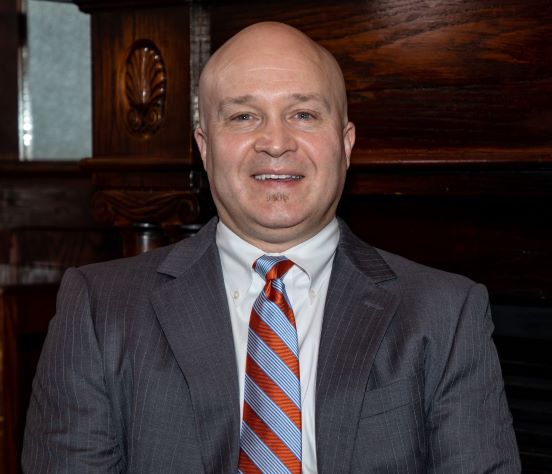
On November 30, 2022, the IRS issued Notice 2022-61, providing initial guidance on the wage and apprenticeship requirements included in the Inflation Reduction Act of 2022. The IRA established increased benefit levels for energy-efficient incentives related to EPAct 179D and 45L that may only be obtained when prevailing wage and apprenticeship requirements are satisfied. This Notice provides additional detail regarding these requirements, associated recordkeeping, and project timing.
The prevailing wage and apprenticeship requirements delineated in the Notice will apply to facilities for which construction begins on or after 1/30/2023.
PREVAILING WAGE RATE REQUIREMENTS
The “Prevailing Wage” requirement states that mechanics and laborers must be paid no less than the prevailing wages required to be paid for federal construction work. (The wage will vary based on exact job description and geographic location.)
A taxpayer fulfills the Prevailing Wage requirement for § 179D and 45L by ensuring that laborers and mechanics employed in the construction, alteration, or repair of an energy-efficient commercial building or retrofit are paid no less than the prevailing wage expected in that location. The taxpayer must also keep records to document the payment of the prevailing wage, “…including books of account or records for work performed.” The Notice specifies that “sufficient records” must be maintained, but doesn’t specify exactly what would be considered “sufficient.” Such records would likely include, but are not limited to, identifying the applicable wage determination, the laborers and mechanics who performed construction work on the facility, the classifications of work they performed, their hours worked in each classification, and the wage rates paid for the work.
The determination of the prevailing wage rate is generally made by the US Secretary of Labor, and the Notice states that taxpayers can rely on the prevailing wage determinations published on www.sam.gov. The site lists the prevailing wage for most labor classifications and geographical areas. If a specific classification is not listed, the taxpayer must contact the Department of Labor, Wage and Hour Division.
APPRENTICESHIP REQUIREMENTS
Taxpayers must satisfy two sets of requirements regarding apprenticeships:
- Apprenticeship Labor Hour Requirements (subject to any applicable Apprenticeship Ratio Requirements):
Qualified Apprentices must be used for certain minimum percentages of the total hours worked on a construction project.
- If construction begins before 1/1/2023, 10% of total labor hours must be performed by qualified Apprentices
- If construction begins in 2023, 12.5% of total labor hours must be performed by qualified Apprentices
- If construction begins after 12/31/2023, 15% of total labor hours must be performed by qualified Apprentices
- Apprenticeship Participation Requirements
- If a taxpayer employs 4 or more individuals in a construction project, the taxpayer must also employ one or more qualified Apprentices
Taxpayers must also keep “sufficient records” that may include “maintaining books of account or records for contractors or subcontractors…”
There is a Good Faith Effort Exception to the Apprenticeship Requirements. If a taxpayer made every attempt to find qualified apprentices through registered apprenticeship programs and was unable to do, he may qualify for a Good Faith Effort Exception. Recordkeeping of their efforts is required.
TIMING
The prevailing wage and apprenticeship requirements delineated in the Notice will apply to facilities for which construction begins on or after 1/30/2023. Similarly, the requirements will apply to certain property, the installation of which begins on or after 1/30/2023.
In order to determine whether a project is subject to these requirements, the beginning of construction/installation must be clearly defined. The Notice permits taxpayers to rely on prior guidance including the Physical Work Test, and the 5% Safe Harbor, to determine the beginning of construction. In general, construction begins when physical work of a significant nature has begun, or 5% or more of the total project cost has been incurred. Taxpayers must also meet a Continuity Requirement, regardless of which test is used. Generally under the Continuity Safe Harbor, the Continuity Requirement has been satisfied if the facility was placed-in-service no more than four calendar years after the year in which construction began.
For purposes of § 179D and 45L, the IRS will accept that installation has begun if a taxpayer generally satisfies principles similar to the tests described above. The relevant facts and circumstances will ultimately be determinative of whether a taxpayer has begun installation.
CONCLUSION
While meeting the Prevailing Wage and Apprenticeship requirements laid out in Notice 2022-61 might seem challenging, the potential reward has significant upside. Taxpayers who successfully demonstrate the satisfaction of these requirements boost the potential maximum 179D Deduction from $1.00/SF to $5.00/SF under the IRA. Similarly, the maximum 45L Tax Credit per multifamily dwelling increases from $500-$1000/unit (depending on Energy Star/Zero Energy Ready Home Standard) to $2,500-$5000/unit when requirements are met.
Have a question? Contact Bruce Johnson And Team, Capstan Tax.


















Recent Comments